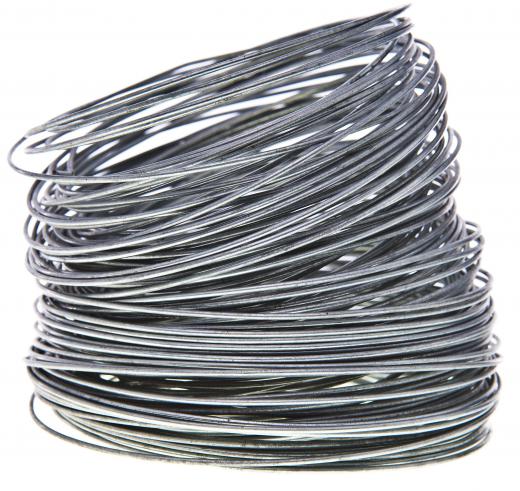Hot-dip galvanizing is a process that involves coating metals such as steel and iron with a thin layer of zinc. Since the zinc interacts more readily with oxygen than iron or steel do, it will tend to corrode first and protect the underlying metal. Hot-dip galvanizing is typically a multiple step process that requires a metal workpiece to be fluxed in molten or aqueous zinc ammonium chloride before a layer of zinc is bonded to it. The pure zinc layer then turns into zinc oxide when it is exposed to oxygen, and finally zinc carbonate after exposure to carbon dioxide. Another similar process is electrogalvanization, which is a method of electroplating that deposits a thinner layer of zinc.
The history of hot-dip galvanizing dates to the 1700s, when the process was first described. It was later refined in the 1800s, which is when the modern fluxing procedure was first introduced. This early hot-dip galvanizing process involved cleaning the iron workpiece with sulfuric acid, and then using ammonium chloride as a fluxing agent, which is a method that has persisted into the present day.

Modern hot-dip galvanization uses either an aqueous solution or a molten layer of ammonium chloride to perform the fluxing step. This is necessary in order to prepare the iron or steel workpiece for galvanization. When an aqueous solution is used, it is typically stored in a separate fluxing tank. Molten ammonium chloride is typically suspended over a bath of pure zinc though, so that the process of fluxing occurs when a workpiece is placed into the bath for galvanizing.

The hot-dip galvanizing process effectively bonds a layer of zinc to the surface of an iron or steel workpiece. Each finished workpiece can vary slightly in physical makeup, though they typically have a pure outer layer of zinc, followed by a layer of a zinc-iron alloy, and then a substrate that consists of either iron or steel. The pure zinc layer will typically turn into zinc oxide after it is exposed to oxygen, after which it will be exposed to carbon dioxide to create zinc carbonate.

Iron and steel are both subject to corrosion in the presence of oxygen, which is a process that leads to the formation of rust. This can be prevented by coating an object in zinc, since the zinc is somewhat more reactive to oxygen than either iron or steel. The formation of zinc oxide and zinc carbonate on the exterior of a metal workpiece typically changes the color to a matte gray, but the underlying metal is not damaged. Objects that are treated with hot-dip galvanizing tend to last longer when they are exposed to the elements, and they can even be welded if extra care is taken in the presence of the resulting zinc fumes.
